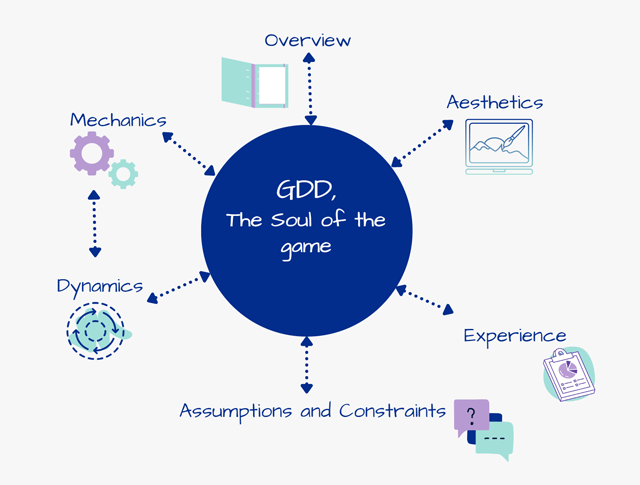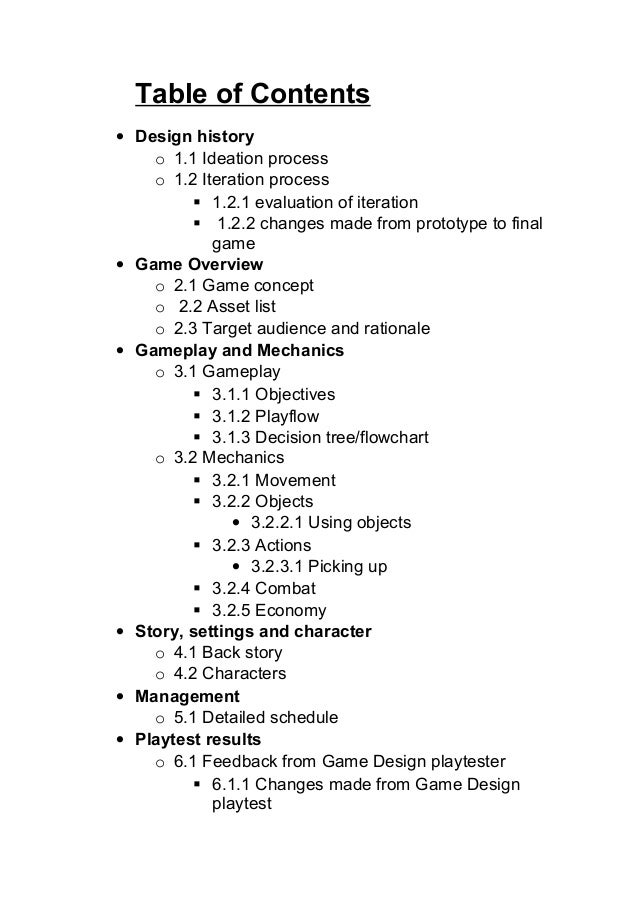Table Of Content

Unlike the first two sections, which are relatively static, this section is likely to undergo fundamental changes over the course of your game design process. The outline is highly elaborate, mentioning every question you might have regarding the project, its mechanics, art style, genre, and other aspects. And yes, the game design document template can look like this, as there are no strict regulations on arranging and formatting one.
Written game design documents
Reference examples are included to provide the development team with a comprehensive understanding of the game’s style, gameplay, and mechanics, and to establish a standard for quality and design decisions. Typically, the lead game designer drafts the initial versions of a GDD. They are responsible for synthesizing, organizing, and filtering ideas to create a cohesive vision that aligns with the project’s overall vision. Some games have no story at all, and some live and die by their narrative elements (like visual novels, most kinds of adventure games, and many kinds of RPG). You might have anything from a simple premise like "you are a little guy on an island rolling sausages so they are fully cooked," to a Baldur's Gate 3-length script, with hundreds of characters and seemingly endless story beats. Here perhaps even more than any other portion of a GDD, your documentation will vary wildly with your project's overall goals and chosen genre.
Examples of Game Design Documents
Instead of thinking of your design document as a database, it can be better to think of it as a communication tool. In which case, the best format for your design document will depend on what you’re doing with it. Which is why the format of your design document can make a huge difference to how helpful it is.
Level Design Specifications
They effectively convey core ideas and information in a compact format. On the other hand, for smaller projects or uncomplicated games with direct mechanics, a GDD may not be necessary. Input from the entire design team is essential to ensure the cohesiveness of the document.
So feel free to use this outline, but remember, it’s just a starting point so you don’t have to start with a blank page. Just be sure to include clear and detailed information in each section. In the Art and Sound section, you’ll detail the visual and audio style of your game. It’s common for this section to include references from other games, movies, and other artwork for inspiration. Discuss the color palette, character designs, environmental aesthetics, and any visual themes that will create a cohesive look for your game. Also, remember that writing a GDD is a big job, but it’s an iterative process.
Design Document: Play With Fire - Game Developer
Design Document: Play With Fire.
Posted: Tue, 20 Feb 2007 08:00:00 GMT [source]
Open the Character template
A game designer's new friend: how to use ChatGPT as a gamedev tool - Game Developer
A game designer's new friend: how to use ChatGPT as a gamedev tool.
Posted: Mon, 21 Aug 2023 07:00:00 GMT [source]
If someone else can easily understand your game by reading your GDD then, even if you’re working alone, your design document will be much easier to work with and much more helpful to you as you build your project. One-page designs are great for showing the relationships between different parts of your game and, by simply using bigger and bigger pages, it’s possible to show broader, more high-level concepts on a single sheet. However, it’s important to identify what is the focus of the design document and what is the detail. Or, for a more practical approach, your design document might explain exactly how each of the systems, mechanics and features of your game are supposed to work. A basic example of a simple game design document (click for the full-size version).
Read my new book!

Exactly which format you should use for your design document depends on what you’re trying to show. There are a lot of different ways to show information and, a lot of the time, different types of data can be easier to understand and easier to work with when it’s presented in a particular way. As a result, using one-page designs can help you to communicate your ideas more easily, in a better way and, when you do, people are much more likely to actually read them.
Before You Start: Helpful Tips And Tricks
Untested ideas, unless you really know that they’re going to work in the way that you expect, will often change as soon as you start to build them or as soon as people try them for the first time. Or maybe you want to use the GDD as a kind of concept document, where the general style and feel of each level is set out, but isn’t specifically described. For example, if you need to keep track of the game’s narrative, keeping a reference to your game’s characters and how the story will unfold can be useful as you develop it.
First, you need the right tools available based on today’s technology. There's no hard rule about how many milestones a project must have, or even how long a milestone is. I tend to plan milestones that are two or three months long, but every project is different, and you should feel empowered to pick what works best for you. The general intent of milestones is that each one represents a sequential and self-contained amount of work that can be reflected on after completion.
However, while long written documents, that describe every detail of your game, may be considered old-fashioned, at some point, you are going need to communicate your game’s details and ideas to another person. Concept arts are used to inspire the team to create the assets to be used in development. They depict characters, locations, objects, and everything else you see in-game.
Rather than doing away with GDDs altogether, the documentation process can be adapted to support the creative, iterative, and collaborative process of game development. Most people who are interested in creating game design docs are new to the industry. That said, you should mention the characters and describe the relationship between them, the game’s setting, and how the story affects the gameplay. Make it brief yet informative — don’t forget the overall document length.
But this kind of estimation puts limits on the rest of the design, and there should be discussions with the development team to check its feasibility. A project overview is just that, an outline of the most important and deciding factors of your game. The project title, the elevator is the only mandatory section of the project overview, but a better one will include more detail such as budget and time estimation. The game overview section offers a high-level summary of the game’s core features and objectives. Danielle is the editor-in-chief of Game Developer, with previous editorial posts at Fanbyte, VICE, and Polygon.
Map out the ideal path you want the player to take and what you want them to encounter along the way. A great game level can make your players feel immensely excited and fully engaged in your game. From the level map, milestones, powerups, and obstacles they encounter along the way, every detail is planned during level design.
Whereas game levels are usually clearest when using a map, as this provides a high-level understanding of how the layout is going to work, even though it’s from a point of view that the player will probably never see. While writing down your game’s design can be useful, a written document can only really be understood in one way, word after word, chapter after chapter. Your design document might do one of these things or it might do all of them but, what’s important is that you understand what information your design document is supposed to provide and who it’s going to provide it to.
Maintaining detailed internal documentation is a must for effective game development process management. For decades, the GDD has been an industry standard, intended to provide everyone involved in the game design process with a singular vision. It's a highly descriptive, living document, created through the collaboration of designers, developers, and artists. A clear and well-structured GDD should guide you through the game development process, serving as a master checklist. Entire courses of study can be taken on user experience/user interface design specifically for games. For the purposes of game design documentation and generalist game designers, lists and simple diagrams go a long way in communicating the needs of the project to UX designers.
With each part of the plot, it should be obvious how it will be presented in the game itself. After brainstorming sessions with the artists, they need to bring those abstract concepts to life for the first time. These are not the kind of art that you will directly use in your game. These include the main protagonist and supporting characters, villains, NPC, and enemy types.


No comments:
Post a Comment